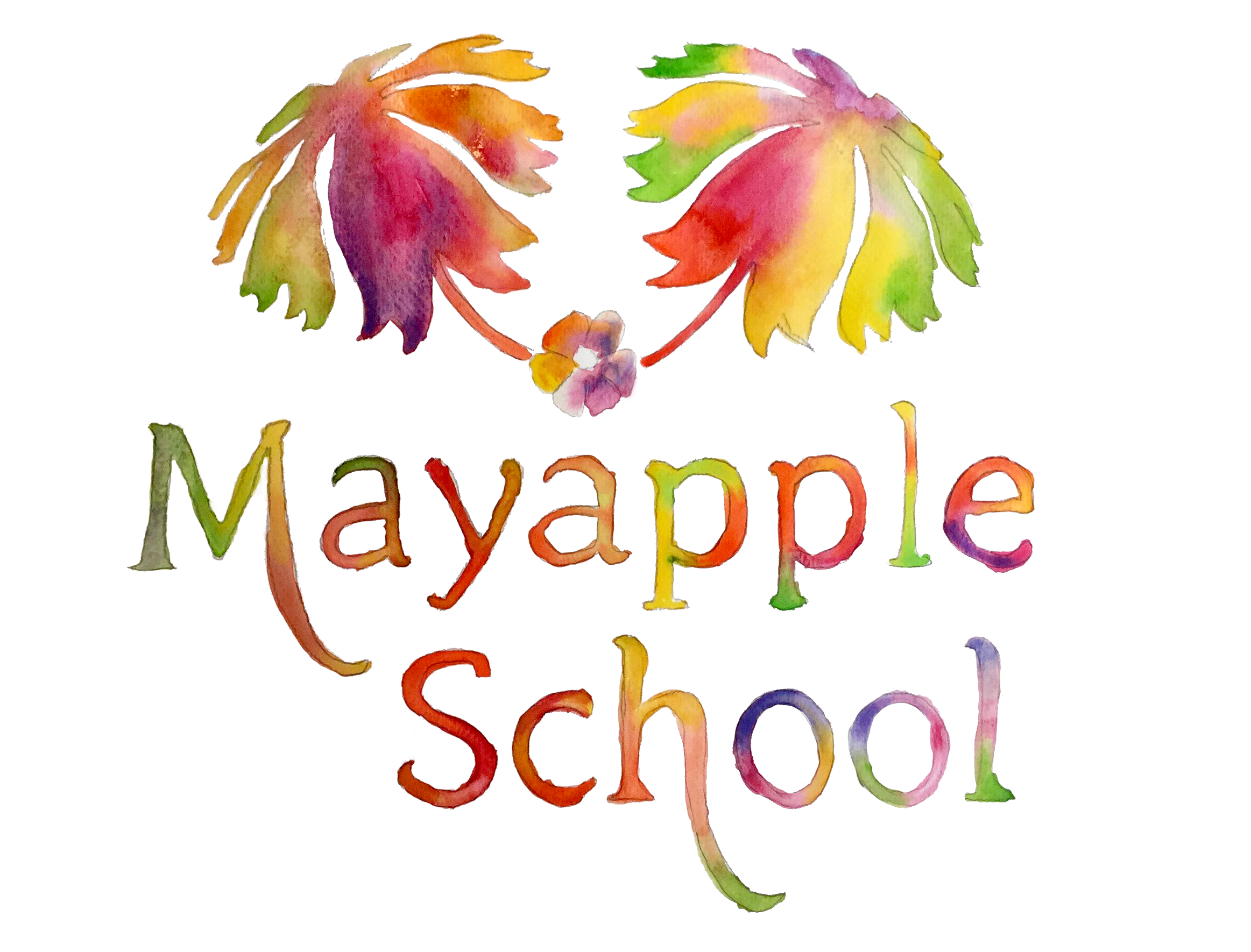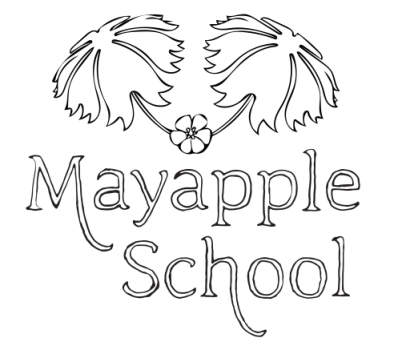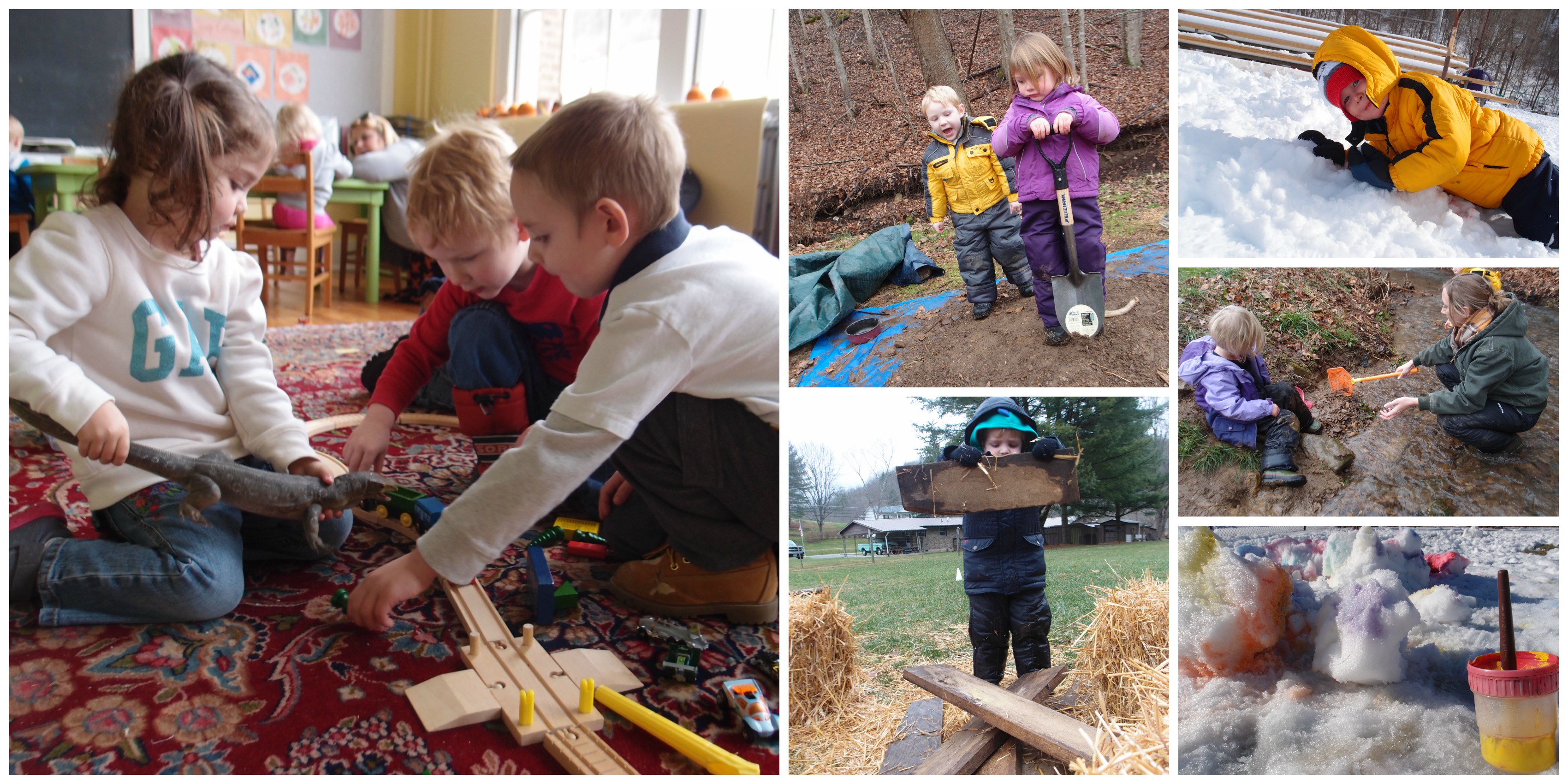At The Mayapple School, students have opportunities to learn new ideas and explore them first-hand. We believe that real learning directly addresses interesting topics and meaningful activities. Preschool is not just “cute.” We have real work to do here.
Interesting Topics and Meaningful Activities
Our units can last anywhere from one week to two months, and may be presented in a block format or a spiraling format, where students return to the subject as they grow and as the season changes. The unit is simply the topic that the class as a whole is currently engaged in. Topics are chosen based on student interest and readiness, seasonal influences, and richness of content. Previous topics have included: pets and the pet store, donuts and the donut shop, fire fighters and trucks, chickens and hatching chicks, and more.
During a Butterflies unit, for example, we might observe caterpillars, record life cycles, learn about mimicry, and investigate answers to student-driven questions like, “What do caterpillars eat?” or “How high do butterflies fly?” What you won’t find is much emphasis on superficial decorator-type application of butterflies. Themed worksheets might be “cute,” but if an activity could just as easily be done with gingerbread men or ice cream cones, then it doesn’t directly support our work on butterflies. Our main objective is to align our work with the unit’s big ideas.
Interdisciplinary Development
While we do have independent work time set aside for pure skills work, such as letter awareness, writing, counting, and pattern recognition, skill work is also incorporated into our unit work. Our units are always multi-disciplinary. This in-context learning allows students to map connections between new ideas and old, which supports concept development and knowledge expansion. It’s a stronger connection than rote learning provides.
How Projects Are Born
Project Based Learning refers to the learning students do when immersed in a child chosen, child directed exploration of a topic over a period of time. The potential for Project work at The Mayapple School is high, and teachers are continually gauging student interest and eliciting student ideas to see when and how a project might grow from a unit. Project work encourages children to develop initiative in learning and knits the students together through shared purpose.
During our first school year, (2015/2016) our first unit with features of Project Based Learning occurred in the fall, when children spontaneously and repeatedly began making “soup” out of creek water, sticks, leaves, mud, etc. in a big plastic tub. Teachers grew a unit out of the child chosen activity by reading “Stone Soup” and other related books, making real soup as a class, exploring soup cookbooks, and eliciting children to create representations of their favorite soups. Children directed the growth of the unit by adding creative play ideas to their soup making (soon, the leaves were “celery” and seedpods were “peas”). While they did not initiate other activities of the unit, these activities did enhance the quality of their nature “soup” making outside.
Along the Project continuum, we moved up a few notches when the class decided to explore the topic of “Building.” Teachers noticed that children enjoyed using sticks for building outside, and blocks and roads were popular in the classroom. While original teacher ideas included a balanced look at many types of building, from tunnels and bridges to houses and skyscrapers, including machinery, tools, and materials needed for building, the children had other ideas. The second day of the planned unit involved a read-aloud of “Sky Boys,” about the building of The Empire State Building, and making a mini Empire State Building out of a tall cardboard box. A simple question, “How can we turn this box into the Empire State Building? What parts does it need?” elicited responses like “windows! a tall spiky thing on top! A door!” and more, until the big one: “an elevator.” The kids were so excited they were jumping out of their seats with their ideas. And so we began several involved weeks of painting, arranging windows, and making an elevator (with pulleys, after playing with how they worked.). Each step of the process was put to the students to figure out, and students tried things the teachers never thought of. For example, the viewing platform at the top of the building was made out of balsa wood balanced on top of wads of air dry clay, held up by golf tees hammered through both the clay and the cardboard. This “Building” Unit turned “Empire State Building” Project was truly directed by the students. We went with “depth, not breadth” for this project, really growing our cognitive problem solving abilities.
Not all units become projects, and we don’t always know when something will “take off.” In addition to the year-round project of exploring change and getting to know the natural world, usually 2 -3 projects emerge per year. In 2018/2019, our projects this fall were the creation of a donut shop in our classroom based on our visit to a real donut shop, and our nocturnal monster project, where students attempted to find out if monsters were really real but nocturnal (which is why we have never seen them) using a variety of props and a game camera. We look forward to exploring a variety of child-chosen units this spring, and supporting children’s interest as more projects develop.
You can read about one of The Mayapple School’s projects on our blog here: The Velveteen Rabbit Fire Truck. More information about the project approach can be found in Young Investigators: The Project Approach in the Early Years by Judy Harris Helm.
How Field Trips Support Project Work
The Mayapple School engages in about three field trips per year that support project work. Field trips are planned when: 1) child interest indicates that, with a little more information and investigation opportunities, a project will develop and 2) when teachers determine that a field trip is the best or a desired support for the project work. Because field trips at The Mayapple School are used to support project work, they are best done towards the beginning or maybe the middle of the project, so that the first-hand experience of the field trip can inform the subsequent work of the child.
At this time, The Mayapple School does not have transportation available, so parents must arrange to take their child on these field trips . We attempt to strike a balance of respecting child interest and giving parents notice by arranging field trips at least 2 (and often 3) weeks away. While many parents enjoy going with their child on field trips, others recruit babysitters, other Mayapple student parents, or extended family members such as grandparents to attend field trips, which gives children the important opportunity to develop relationships with other special adults in their lives. Ultimately the goal and purpose of the field trip is to help future classroom work develop for the children (although the trips can be fun for the parents, too, we want you to understand their purpose and not feel “guilty” if you personally can’t go with your child. We do have other opportunities, such as Family Reading Morning, whose purpose is to foster parent/guardian relationships with their child, that you will receive more advance notice about.) Mayapple school staff will help parents to make connections with others for carpooling purposes should they have difficulty transporting their child to the field trip site.


